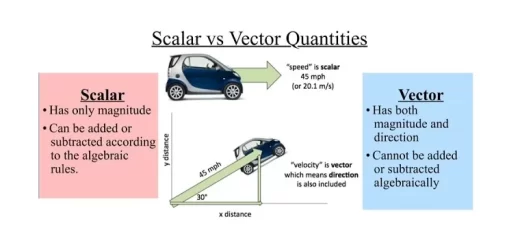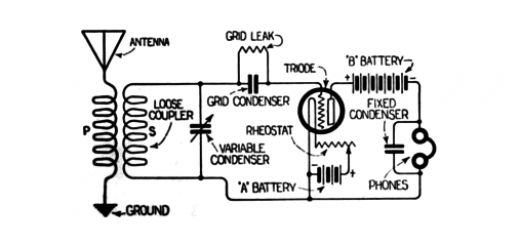Electric transformer uses, structure, efficiency and How it works
The transformer is a device used to step up or to step down an AC voltage, It is used in some home appliances such as bells and fridges, It is used to decrease the energy losses during its transfer from generators at electric power stations to far places where it can be distributed among buildings to be used.
Electric transformer structure
Two coils: a primary coil and a secondary coil made of copper wires, due to the small value of the copper resistivity, so the coil resistance becomes small and decreases the energy losses inside it in the form of heat.
The two coils are wound around a soft iron core made of thin siliconic iron sheets (laminas) insulated from each other, because of the large value of the iron permeability, that concentrates the magnetic flux density and when the core is made of thin iron sheets its resistance increases and that decreases the eddy currents and also the energy losses in wires.
Its types:
- Step-up transformers used at electric power stations.
- Step-down transformers used at the zones where the energy has to be distributed among buildings.
How it works
The scientific base depends on the mutual induction between two coils, The primary coil is connected to the source of AC to be converted, The secondary coil is connected to the electric circuit that is required to be supplied by a certain value of potential difference.
When the circuit of the secondary coil is closed, the electric current passes through the primary coil and a variable magnetic field is generated, The iron core concentrates the magnetic flux resulting from the alternating current and makes the lines of such a field pass through the secondary coil turns.
Due to the variation of the magnetic field from the primary coil, an induced emf is generated in the secondary coil having the same frequency, The induced emf in the secondary coil will be more or less than that of the source based on the ratio between the number of turns of secondary to the primary coil.
The relation between the two emf in the coils of the ideal transformer
When a potential difference (Vp) is applied to a primary coil of a transformer its number of turns (Np), then the induced emf (Vs) generated in the secondary coil that its number of turns (Ns) is:
Vs = − Ns ΔΦm/Δt
Where: ΔΦm/Δt is the rate of flux lines that cut the secondary coil.
The electromotive force in the primary is in turn related to the rate of change of the magnetic flux and is determined from the relation:
Vp = − Np ΔΦm/Δt
Assume no magnetic energy loss, dividing the above two relations one get the following formula:
Vs / Vp= Ns / Np
If Ns > Np then (emf)s > (emf )p and the transformer is a step up transformer.
If Ns < Np then (emf)s < (emf)p and the transformer is a step-down transformer.
The relation between the current intensities in the two coils of the ideal transformer
let us assume that there is no loss in the electric energy in the transformer (almost zero resistance), then according to the law of conservation of energy, the electric energy is given by the source in the primary coil must equal that delivered to the load in the secondary coil.
VpIpt = Vs Is t
From which the input power (for primary coil) is equal to the output power, (for secondary coil)
VpIp = Vs Is , ∴ Vs / Vp= Ip / Is
Vs / Vp= Ns / Np , ∴ Ip / Is = Ns / Np
This shows that the intensity of the electric current in either of the two coils is inversely proportional to the number of its turns if the number of turns of the secondary coil is twice that of the primary coil, then the intensity of current in the secondary coil equals half that in the primary coil.
When the secondary coil circuit is opened, the electric current almost vanishes in the primary coil, because the self-induction in the primary coil generates induced emf that balance the emf of the external source where a small part of it may be consumed in resistance of the wire.
The electric transformer can’t be used to step up or step down DC emf, because the magnetic flux due to the DC current is constant, thus no induced emf can be generated which is the base of electric transformer working.
The induced emf in the primary coil depends on the rate of change of flux, The induced emf in the primary coil limits the electric current passing through it so as not to increase and burn the primary coil.
The step-down transformer that decreases the potential is considered a current rising transformer and vice versa because the power is constant, so the potential difference is inversely proportional to the electric current intensity based on the relation: I = Pw / V
The step-up transformer is used to raise the electric potential at the power stations, The step-down transformer is used to lower the electric potential at distribution zones.
The electric power at the electric power stations (power plants)
A step-up transformer is used to raise the electric potential to a very high value which is associated with a decrease in current to a very low value, consequently, losses decrease in the electric energy during power transmission along great distances, This is because the power lost in wires = I² R, The falling in potential = I R.
Where: I is the electric current intensity passing through the wires and R is the ohmic resistance of the wires, from which it is clear that the power consumed in wires is directly proportional to square the current intensity.
By decreasing the current intensity passing through the transmission lines by 1/100 of its value in the primary coil using a step-down transformer, the loss in energy is decreased by 1/10000 of its value.
The electric power at the distribution zones
A step-down transformer is used to lower the potential difference to 220 Volt which is the working household voltage for electric appliances.
The power at the distribution zones = The power at the electric station − The power lost in wires
Efficiency of the transformer
If there is no loss in electric energy in the transformer, the electric energy generated in the secondary coil equals the electric energy available in the primary coil, then the efficiency of the transformer is said to be 100 % but such the ideal transformer is not available in everyday life.
Reasons for electric energy loss in the electric transformer and how to minimize it
- Part of the electric energy is converted into thermal energy in wires, it can be reduced by using metallic wires of least ohmic resistance.
- Part of the electric energy is converted in the iron core into thermal energy due to eddy currents, so, the core is made of thin insulated sheets of siliconic soft iron having high resistivity.
- Part of the electric energy is converted into mechanical energy consumed in the vibration of the molecules of the core, so, soft iron is used for the easiness with which its magnetic molecules move.
- Leak of some magnetic flux lines , so they do not intercept the secondary coil, so, the secondary coil is wounded surrounding the primary coil and isolated from it.
The efficiency of the transformer (η) is the ratio between the electric power of the secondary coil to that of the primary coil, or it is the ratio between the electric energy gained from the secondary coil to the energy given from the source to the primary coil within the same time.
The efficiency is given by the relation: η = [ (Pw )s / (Pw )p ] × 100%
η = [ Vs Is / Vp Ip ] × 100%
When the efficiency of the electric transformer is 80 %, It means that the ratio between the electric energy gained from the secondary coil to the energy given from the source to the primary coil within the same time = 80/100.
In case of an electric transformer having two secondary coils each is connected to a different device, then:
When operating each device separately:
Vp / ( Vs )1 = Np / ( Ns )1
Vp / ( Vs )2 = Np / ( Ns )2
When operating the two devices together at the same time:
(Pw )p = (Pw )s1 + (Pw )s2
Vp Ip = (Vs )1 (Is )1 + (Vs )2 (Is )2
Alternating current generator (Dynamo)- AC Generator & Effective value of the alternating current
DC motor uses, structure & How to increase the efficiency of rotation of electric motor



